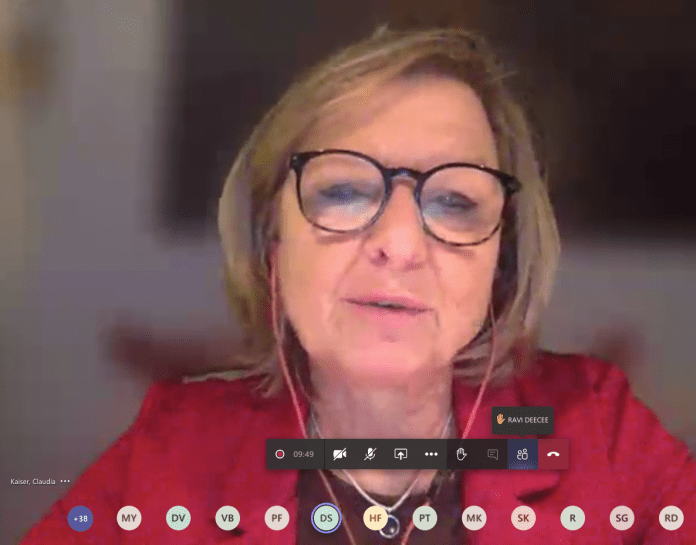
FICCI and GBO organized a free webinar on Indian stories going overseas as part of the Frankfurt Book Fair (FBF) Special Edition on 14 October 2020. The Frankfurt Book Fair (FBF) is being presented for the first time ever in a digital format owing to the wide spread of Covid-19 pandemic. Neeraj Jain, managing director, Scholastic India books introduced the FICCI Rights Catalog featuring selected writings from India which was launched at the Frankfurt Book Fair (FBF). The catalog titles, received from publishers across India, have been segregated into genres. The catalog is available on the FICCI and GBO websites.
The webinar opened with a keynote address by Claudia Kaiser, vice president, Frankfurt Book Fair. She emphasized that embracing changes and challenges was the strength of the publishing industry. India was the first country that enjoyed the honor of being the Guest of Honor country twice at FBF – in 1986 and then again in 2006 and this fostered networking between the two publishing communities. She further added that the GBO would continue to work towards organizing more seminars and events to bring the authors and audiences from the two countries together on a common platform, and this would further help in the book trade between both countries. Ratnesh Jha, chief executive officer – India and South East Asia, Burlington Group moderated the session.
The FBF special edition 2020 has 4,000+ exhibitors from 102 countries. Kaiser’s address was followed by a short speech by Ratnesh Jha, chief executive officer – India and South East Asia, Burlington Group. Jha stressed the significance of the ancient manuscripts and old tales in the storytelling culture of the country. He talked about the importance of working together and creating stories in a vibrant and pluralistic environment. The OTT consumption had risen from 25 to 80 minutes during the Covid-19 lockdown in India. Of this, 66% comprised vernacular consumption while English stories made up for 11-12%.
This was followed by a talk by Preeti Vyas, chief executive officer, Amar Chitra Katha. Preeti shared that most of exported stories from the country comprised of Indian exotica. To truly make the export successful, we must look at ourselves as content creators agonistic to means of reading. She gave the example of Amar Chitra Katha and Tinkle apps, which had been made available to users free of cost for a period of 30 days during the Covid-19 lockdown. The company added 10 lakh new users during this period with 30% users from outside India, and became a global platform in a month. Preeti asserted that we must leverage the power of digital media; and keep on adding new mediums like podcasts, apps to reach readers thereby continously evolving the process of creation.

Ravi Deecee, chief executive officer, DC books spoke about the measures his company had employed to increase readership in Kerala during the Covid-19 lockdown. DC books slashed the prices of eBooks, offered free downloads of the app, and incorporated the Zomato and Swiggy delivery models to increase readership throughout the state. He talked about the opportunity to work with Khaleej Times. He suggested that the Indian publishing industry must work on models of book and newspaper partnerships to increase book readership. Newspapers can also blog about books on their sites and feature Indian authors in print to reach audiences. The models evolving in UAE can be incorporated in India to improve the reading habit.
Mudit Mohini, director, Vishv Books said that we must work on marking the different parts of the publishing ecosystem – from commissioning to publishing and offer complete customization solutions to international publishers for information and communication technology (ICT) in education, value education and curriculum adaptation.
Vineet Bajpai offered an author’s perspective to the webinar. While western audiences must be open to the idea of real stories emanating from India, our epic novels have the potential to connect with international audiences. Screen adaptation of these epics make for a good channel for native Indian stories to reach western readers. We must take this reading hobby to the professional level through a dynamic approach.
The session was concluded by Neeraj Jain, managing director, Scholastic India, who said that the Indian publishing industry should look at the international audience through a wider lens. The services segment of the industry is developing in a big way, and we should focus on the expansion in a much larger manner. We must work on our pre-press and editorial services to the global audience. The FICCI webinar on export of Indian publishing marked an interesting way for Indians to network in the foreground of the Frankfurt Book Fair (FBF).
















